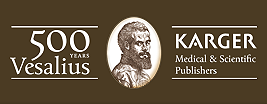
cientist, artist, self-promoter: While Vesalius was producing his brilliant anatomical work, he was also busy sculpting his own mystique. This interesting master term paper is only available in German.
By Angela Müller
With his publication of De humani corporis fabrica in 1543, the Flemish anatomist Andreas Vesalius (1514--1564) created one of the most famous scientific books to come out of the Renaissance. After addressing three different research approaches from the many publications on the works of the anatomist, this paper argues that the success of the book was due not only to its new medical insights but also as a result of the skillful self-promotion of the author. Vesalius applied various marketing strategies, not least to attract the attention of Charles V and thus obtain his patronage. Hoping to curry favor with the Emperor, in his dedication to Charles V at the beginning of the book Vesalius presented himself as an authority in medicine, and especially dissection. Furthermore, with his treatise, he promised to restore the early glory of dissection as an ancient art of medicine to its rightful place. Charles V rewarded him with the position of a personal physician at the imperial court where Vesalius could apply his practical knowledge. Furthermore, this paper shows that, besides the treatise itself, the presented material played a pivotal role by its clarity of representation. Here, the paper concentrates on the high standard of the book and the elaborate illustrations presented therein. Vesalius used De humani corporis fabrica for two purposes: firstly, Vesalius’ aim was to establish anatomy and dissection as honorable scientific disciplines, and secondly, he turned his book into cultural capital in order to gain access to the court of the Emperor Charles V.
Please click here to read the whole paper.
